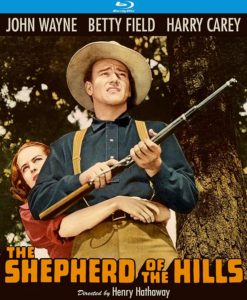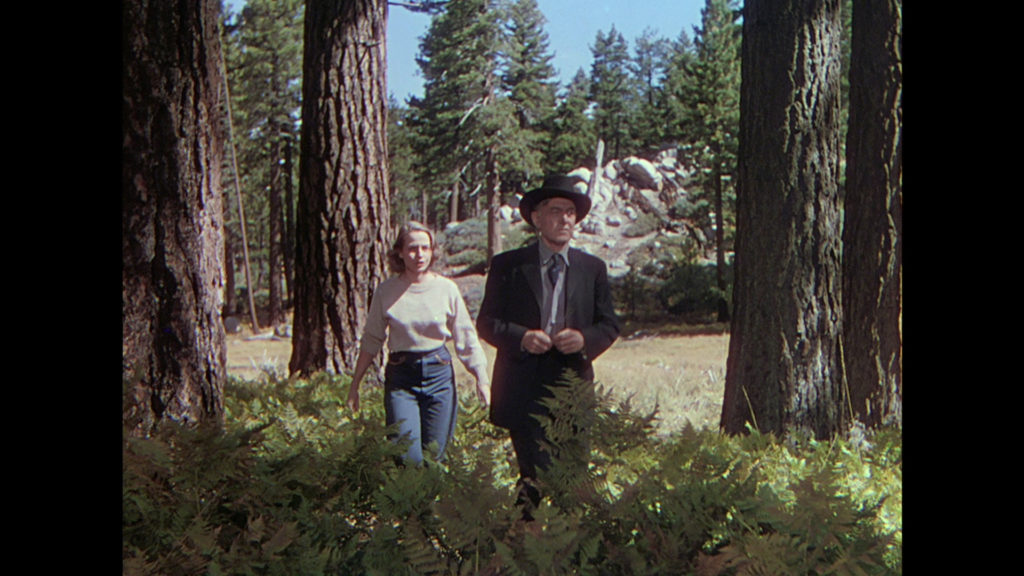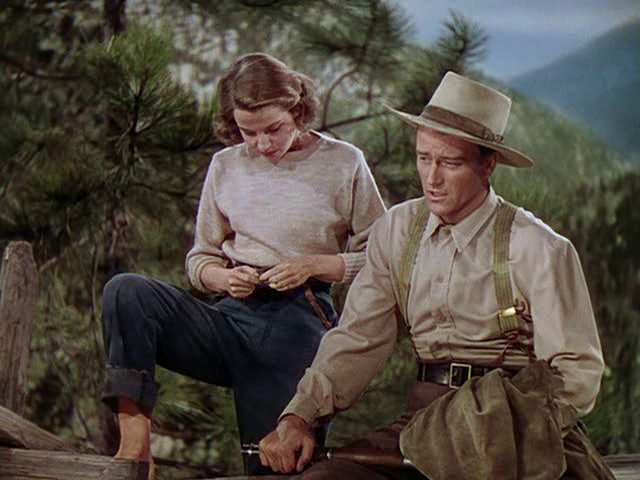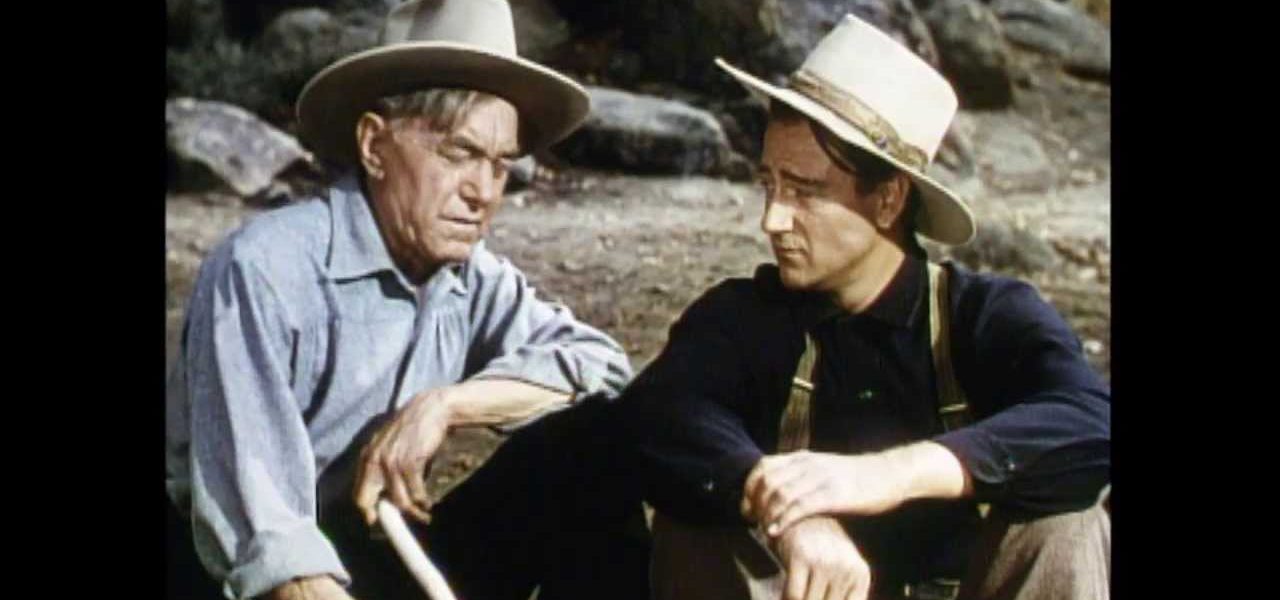John Wayne Supports Lead Harry Carey in Nuanced Christian Allegory.
DIRECTED BY HENRY HATHAWAY/1941
BLU-RAY STREET DATE: NOVEMBER 3, 2020

Christian allegories ain’t what they used to be. Case in point, 1941’s The Shepherd of the Hills– a tremendously sensitive and nearly note-perfect tale of Ozark hill folk back the day. From Henry Hathaway, a director so proficient for so long that even he could likely never have seen all of his sixty-plus films, this adaptation of the 1906 Harold Bell Wright novel lands impressively assured in its depiction of a simpler way of life most skewed.
This third such film of the source material (previous versions from 1915 and 1928 are now lost) headlines John Wayne, still fresh-faced and still feeling his way as a leading man. But don’t let that billing fool you; not only is Wayne’s performance one of tremendous emotional nuance and moral greyscale, he’s also not really the star at all. That honor rightly goes to veteran actor Harry Carey, playing benevolent and cultured newcomer Daniel Howitt. Supporting them in the lead female role of the spirited tomboyish Sammy Lane is twenty-two-year-old Betty Field. As scene-stealing as she is barefoot, Field is the film’s central nervous system to Carey’s heart- even as Hathaway’s camera overtly sexualizes her here and there. (A bare back, a linger on her bent-over bum… fleeting moments that are glaringly out of place).
Tonally, Hathaway is far more controlled. He carefully cultivates The Shepherd of the Hills as a textured cinematic space in which engaging soulfulness is tantamount to living, but any moment of such grace can and will be shattered without a moment’s notice. The land in these anemically wooded hills may not be much to look at, but everyone has a long-standing relationship with it. Superstition and religion coexist but don’t necessarily overlap.
The cultured Howitt, following a $1000 arrangement the likes of which none of the impoverished locals can fathom, purchases an abandoned and notorious tract of nearby land. (The scene when he asks the local shopkeeper if he could cash a $100 check, leading the shopkeeper to meticulously comb all of his hiding places for squirreled-away bills, is a comedic charmer). Most everyone, including Sammy, holds right to the notion that the land in question is haunted. But to Howitt, it’s a different spirit at work there. His motivations for acquiring such a place become apparent soon enough.

It is during the scene when Howitt engages nostalgically and lovingly with items in the cabin on the property that we truly witness Carey’s skill as an actor. Not a word is spoken for what must be minutes, yet as he moves from room to room, from object to object, we are told everything we need to know up to that point. Even as a precious rocking chair begins to rock on its own accord, but is revealed only to be the wind, Howitt’s processing of the moment is at once deeply personal, full of mystery, ghostly, and finally sentimental. Carey plays it absolutely beautifully, a testament to the potential power of non-verbal performance.
Hailing from Paramount as a relatively early Technicolor production, it’s not particularly surprising that The Shepherd of the Hills isn’t a perfect presentation on Blu-ray. Technicolor restoration is a time-consuming and no doubt expensive endeavor, though the results can be rightly eye-popping. (See Kino Lorber’s impressive Blu-ray release of 1935’s Becky Sharp, which also maintains the distinction of the first live-action Technicolor feature film). As good as The Shepherd of the Hills is, not even the star power of John Wayne has managed to warrant it a candidate for that level of contemporary care. Or, perhaps this is the best that the surviving elements can yield- a bit murky in places and slightly muted. Color registration is mostly just fine, though there are moments of slippage. In any case, the film nonetheless looks quite good, no doubt superior to any previous home video release. Here’s hoping that one day it can look even better.

Don’t let the apparent fact that only five minutes was spent on the Blu-ray’s cover art throw you; Kino Lorber Studio Classics doesn’t skimp on this release. It boasts a newly recorded audio commentary by film critic and author Simon Abrams, who spends much of his track detailing differences between the source novel and the film (of which there are many). Also, we get the trailer.
So how is The Shepherd of the Hills a Christian allegory? Howitt’s empathy and humanitarianism ought to be enough to tip the tale into the realm of the light, though should more be needed, the man is immediately introduced to be a practical healer. Along the way to a necessary reconciliation, we get notions of eyesight to the blind. There are even scores of actual sheep. Howitt’s eventual actions of tough love might be quite extreme but bear in mind… allegory. Nothing here is easy for the characters- and by extension, the viewers. But this foray into the hills is shepherded with all the grace and truth that one could hope to find in a fallen valley such as this.


